Dear VW-friends,
I thought a long time about publishing this post or not, because in the following I confess that we have replaced the rear engine compartment section and this is where the chassis number of any Barndoor bus is located. So we are talking in the following about replacing the chassis number, something what could cause big discussions. Don´t get me wrong, we always had this section originally at hand, it was there when the Samba was found:
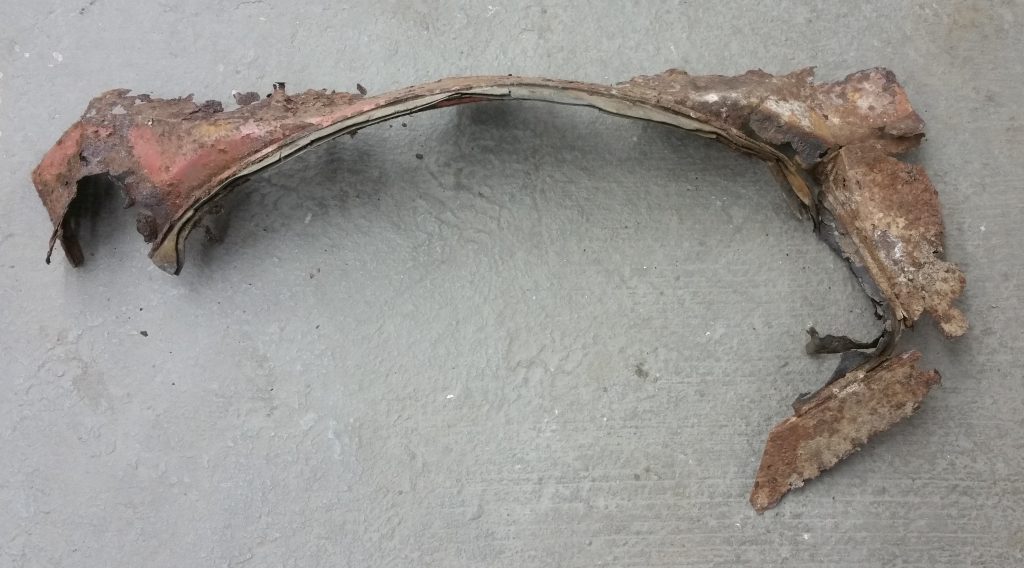
For all readers out there who are not professional Barndoor- pathologists, this front engine compartment section is placed just where the motor is mounted to the gearbox. This is just an ordinary piece of the Bus´ body, made from the very same 0,8mm-sheetmetal as most of the body. It´s strange Volkswagen stamped in the chassis number exactly here, in this relatively thin tin and not –as for example with all VW beetles- in a solid piece of the frame.
Now, have a look at the picture again. Even if I say the number is in the right upper corner, do you see the number? No way, right?
Let´s get a little bit closer. If you watch real close, can you see this little remaining of a stamped number in the corner?
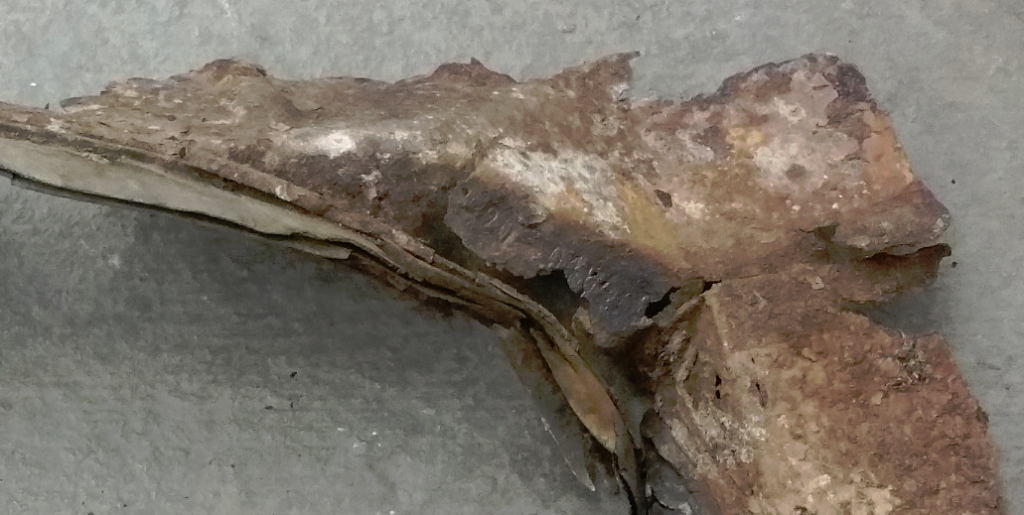
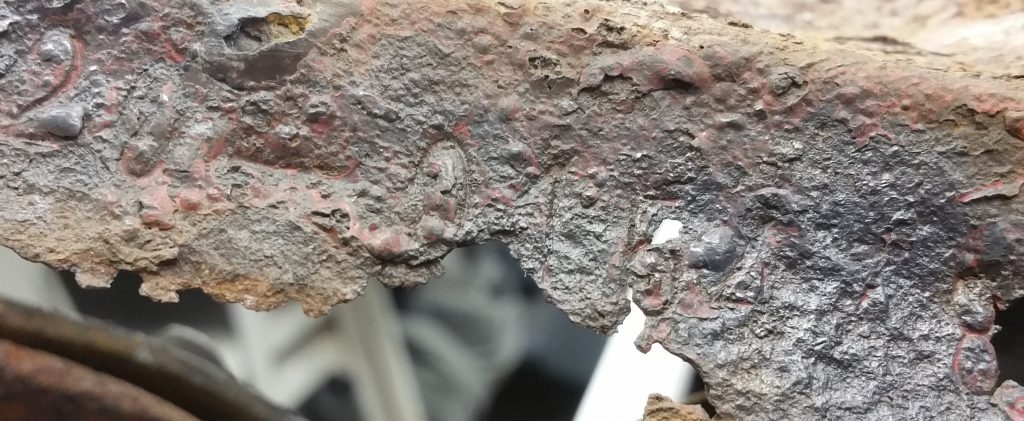
Yep, there is a number, that´s for sure. A “20 – 015…” is clearly visible and most likely a “8” in the end. But what is there in between?
Maybe we can identify it better by applying a little bit of colour in the grooves? Let´s try.
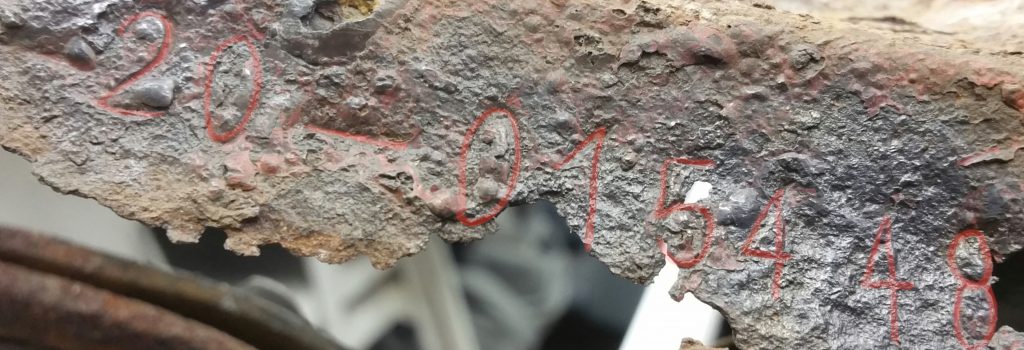
If the Samba would be just an exhibition car, we would have welded this old, rusty and very thin piece in again, but the Samba is intended to drive and it would have been way too risky to weld it in and then loose it while driving due to engine vibrations which would have cracked up sooner or later the super fragile metal.
Other small sections of the rear engine compartment were stable enough to be placed into Marks superb handmade reproduction and he made big effort to fit them in. Have a look on the stunning result:
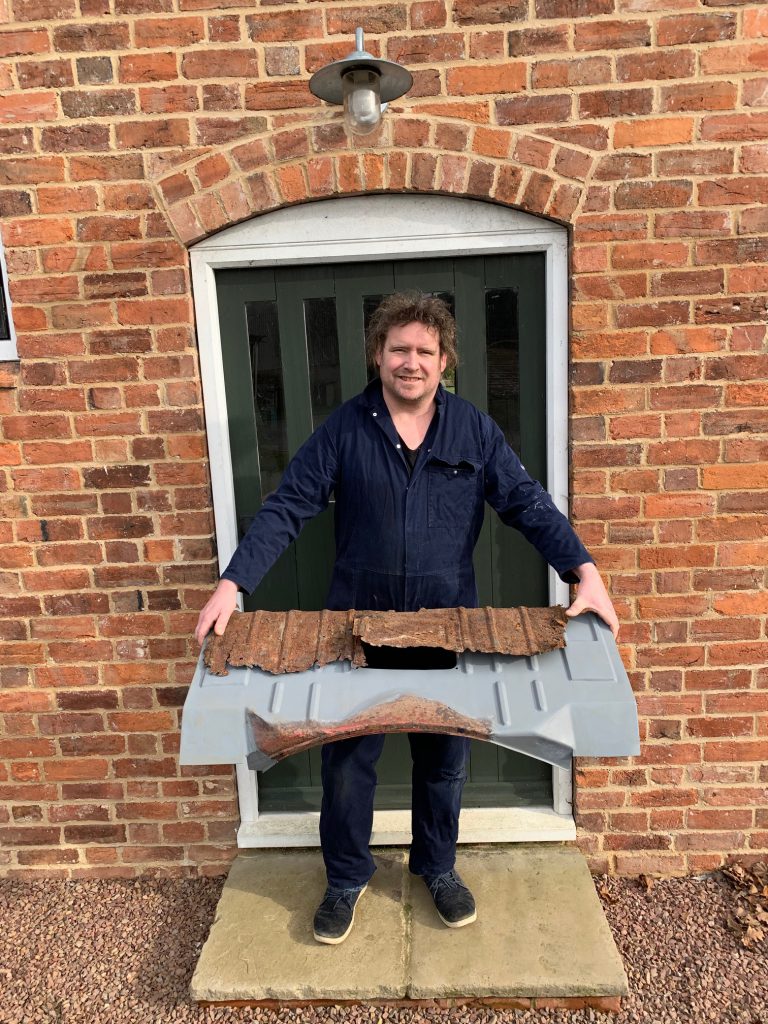
Now it came to the delicate part of the job. Punching in a chassis number in a car is something very sensitive: legal wise, technically and historical wise. The chassis number is the identity of the car, stamping it in is legal only when you use the very same number the car had before, otherwise it´s a criminal act, no doubt about it. Sure you must be able to make 100% clear that you use the original chassis number of the car, what is not as easy as it seems at the first glance. Once the number is stamped in, how could you proof it is the number the car had before?
Luckily we can proof it in even many ways. A lot of people can witness the number was there when the car was found in May 2017 and when we presented the Samba first time to the public a few days later. Since then we are doing a proper and public documentation of the reconstruction in this blog and –much more important- the chassis number is also stamped into more spots then the engine compartment!
In the early days Volkswagen used to stamp VINs and / or body numbers in more than in just one place, but in the weirdest spots of the cars too! Any KdF-owner will agree. It´s the same story if it comes to early Barndoors, just have a look….
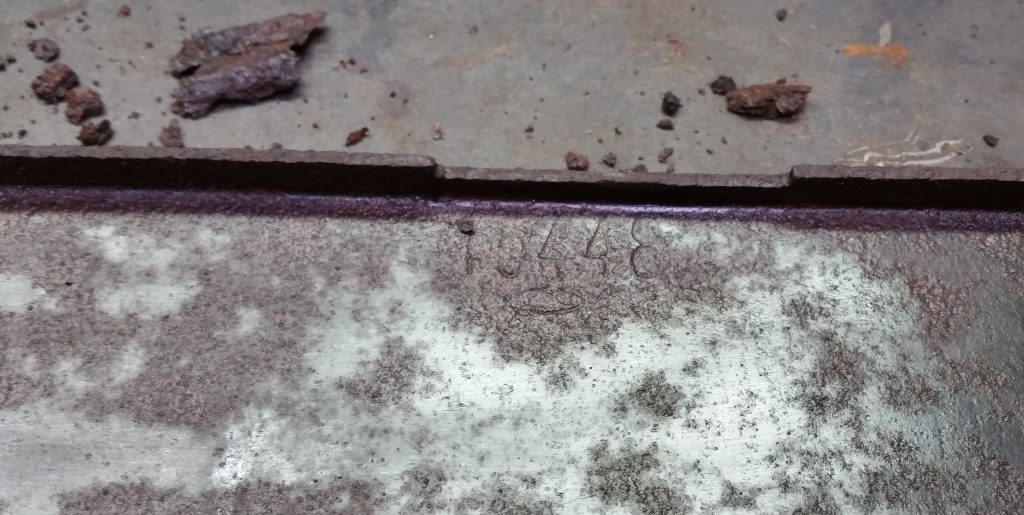
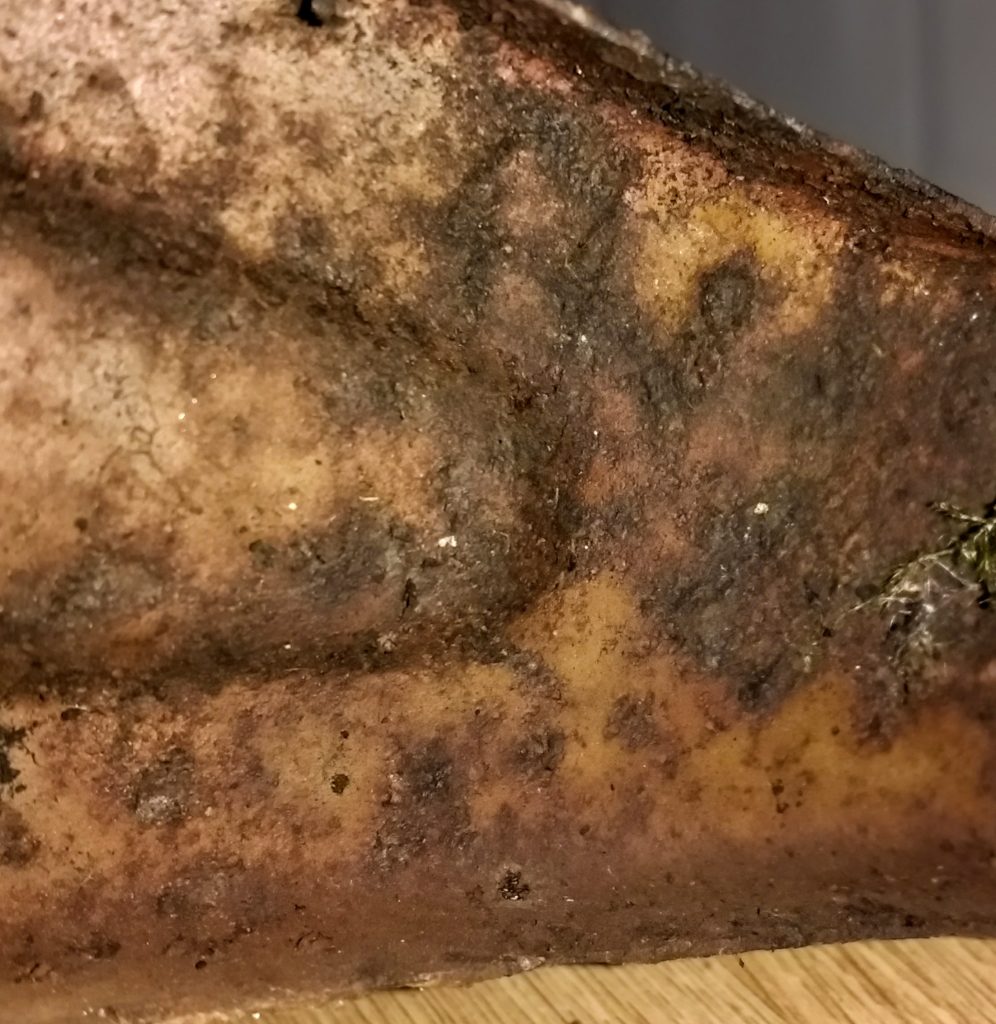
I guess with these facts at hand Mark is authorised enough to stamp the number into his beautiful handcrafted rear engine compartment. Being authorised in a legal and a moral way is one thing, but doing it physically the same way as the factory did is something different, you need the correct stamping digits to come up with a historical satisfying result. If you ever studied early Barndoor chassis numbers you may have noticed that VW used a very specific style of digits, something looking kind of very antique, something you normally would judge to be pre 1945, not 1950s. Finding the correct stamping tools Volkswagen used back in those days is nearly impossible. Nothing on the current market comes even close.
I won´t post here how I located the VW-stamping tool anyway, but I did it. My mechanical skills are very basic, but locating old tools is my profession. And let me point it out straight: this tool is not intended to go “in production”, I won´t borrow it to any of these “smart” guys faking Sambas or other valuable VW busses. I will never support this activity for many reasons: legal ones, moral ones and –if you don´t believe me the first two- because any “new” early BD-Samba in the scene would spoil the value of mine, so forget about it. But if you own a similar project as mine and you can clearly proof that your plans are not about rebirthing a car that went to the junk crusher decades ago, you can contact me for help.
As soon as I had the stamping tool set at hand I send it to Mark who proudly punched the number into his freshly crafted engine compartment. See here the result:
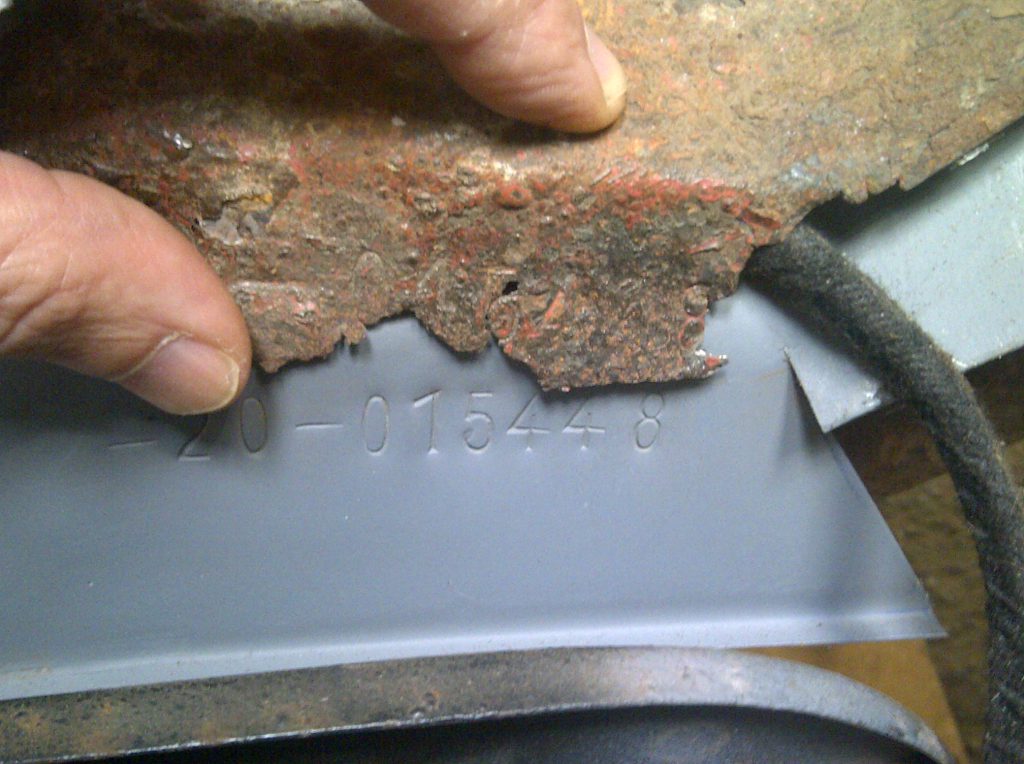
Anyway I hope you accept this picture as a document of our honesty: we didn´t fake anything!
While Mark keeps now on working on the front of the Samba, I am concentrating on some small electrical bits: the wiper motor, the wiper arms and the fuse box. Sounds simple? Not if your goal is to bring every little original piece which was found in the mud back to life. Stay tuned, I will come up with a new post very soon. I have to hurry up, because I want to bring the Samba to Bad Camberg and the European Bug In, which is….. this month!! I better go straight to work now.
Best regards
Florian
Hits: 0
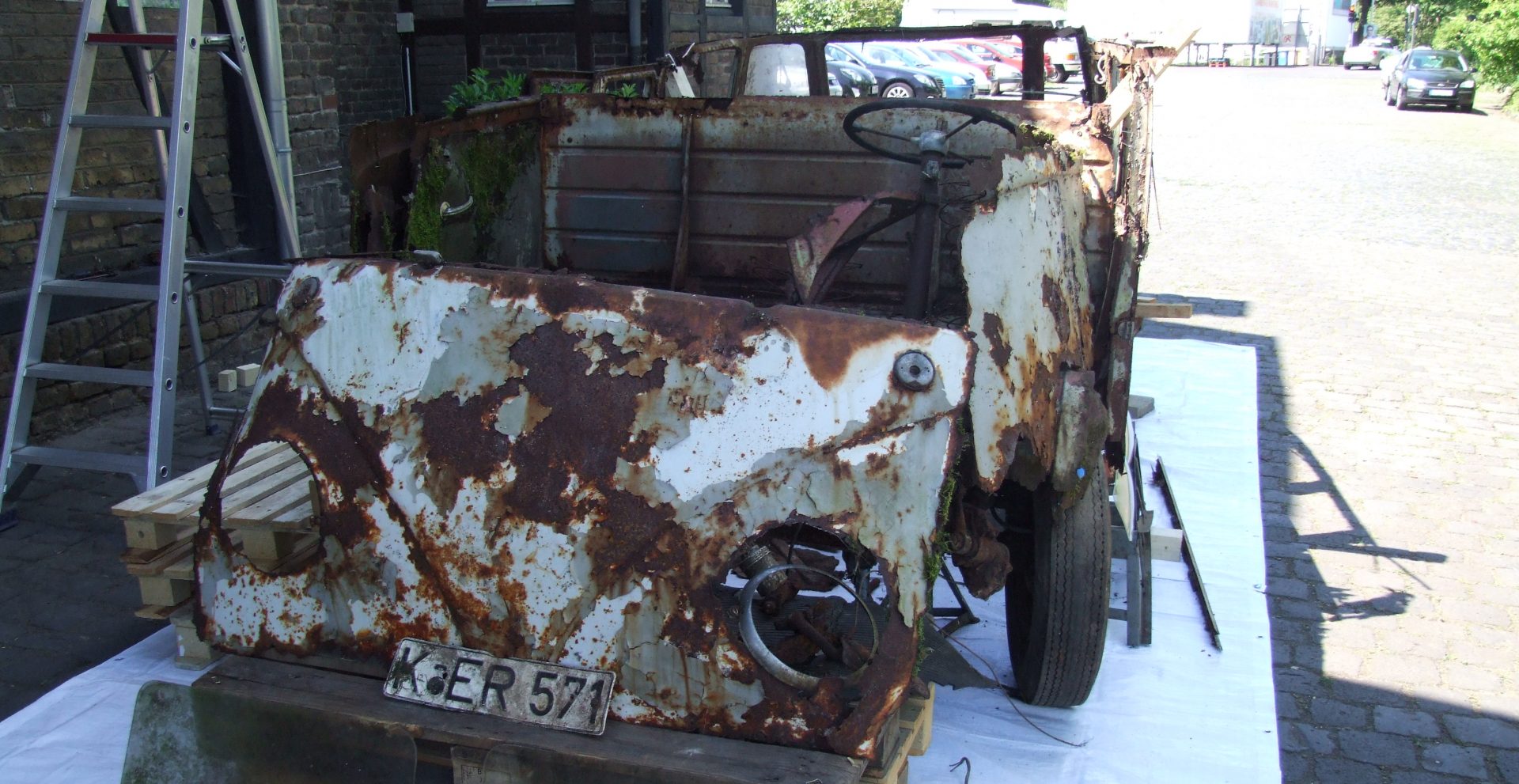
2 thoughts on “20 – 15448”
Florian,
There are some bus restorations that start out with a lot more original ”material”, but end up restored with a lot less than your 1951 VW Samba. I guess that you and Mark might be able to reuse around 50% of the parts that were originally on the bus when it left the factory in 1951 and that is an incredible achievement if we look at how little was left when the bus was found. Of course almost the complete floor is new but that is the case with most T1 busses that have sit outside for a long time before getting restored, so that’s not a big deal. But a lot of important original parts like the engine, the transmission, both axles, almost all the glass and a lot of smaller pieces and parts are there and are reusable or restored. So this sure is a ‘real restoration’, a very special one, and certainly not an recreation with mostly new parts and a VIN plate.
I think its absolutely incredible what you have achieved up until now. The front and the drivers side already look amazing with more than half of the original panels saved and the original paint brought back to live. This project is a real inspiration and it sets new standards of what can be achieved with dedicated attention and craftsmanship. All the critics have to admit that the two of you do an amazing job.
Keep up the good work. One day, I hope I’ll be able to see it completed, in Amersfoort, next to the incredible ‘Kohlruss’ bus. 😉
Greetings from Utrecht, Holland
Thank you very, very much for your kind comment!
It really makes me happy!
Florian